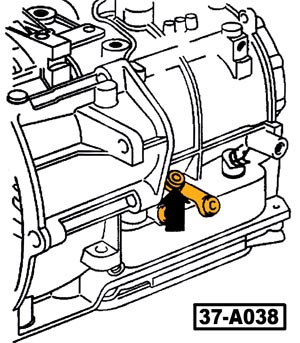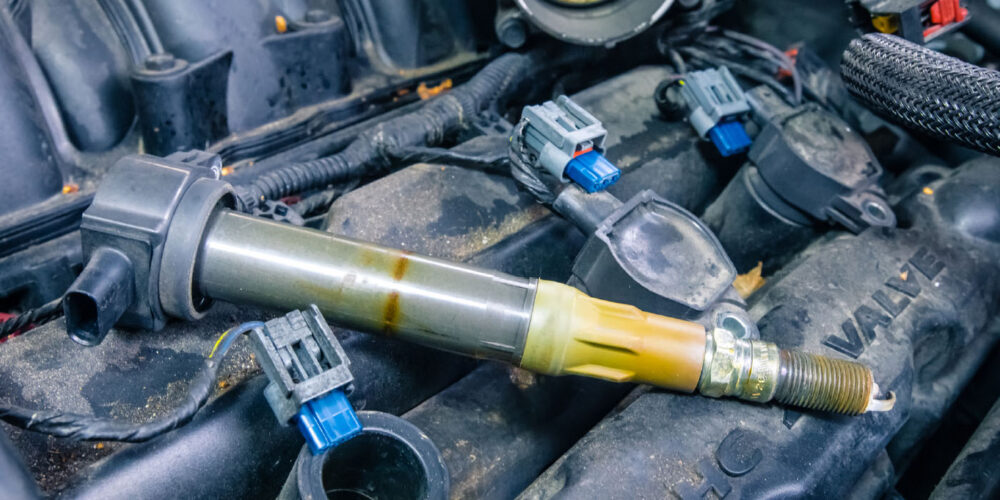If the transmission appears to be leaking around the ATF pan gasket on New Golf, New Jetta, New Beetle and Cabrio models with four-speed automatic transmission, in most cases the leak is not caused by the ATF pan gasket, but by the main line pressure plug (see arrow in Figure 1).
ATF fluid flows down from the main line pressure plug to the pan seal, giving the appearance of a gasket leak.
Note: It is important to note that the O-ring on the ATF filler pipe is treated with oil during the transmission assembly process and some residual oil may be found around the ATF filler pipe due to this process. This is a normal condition and does not indicate a leak.
Caution: Part numbers are for reference only. Always check with your parts supplier for the latest parts information.
Service 1. Clean the ATF from the transmission surface.
1. Clean the ATF from the transmission surface.
2. Remove the plug and check the seal.
– If the seal is damaged: Replace with P/N N 904 142 01 (plug with seal).
3. Tighten the main line pressure plug to 12 Nm. Do not over-tighten the plug. Excessive torque will damage the seal.
– In rare cases, a leak may be caused by a missing bushing in the ATF pan gasket.
4. Inspect the ATF pan gasket for any missing bushings and replace the gasket if necessary.
5. Test-drive the vehicle and inspect the transmission for signs of leakage.
Courtesy of Mitchell 1.
For more information on Mitchell 1 products and services, automotive professionals can log onto the company’s website at www.mitchell1.com.














